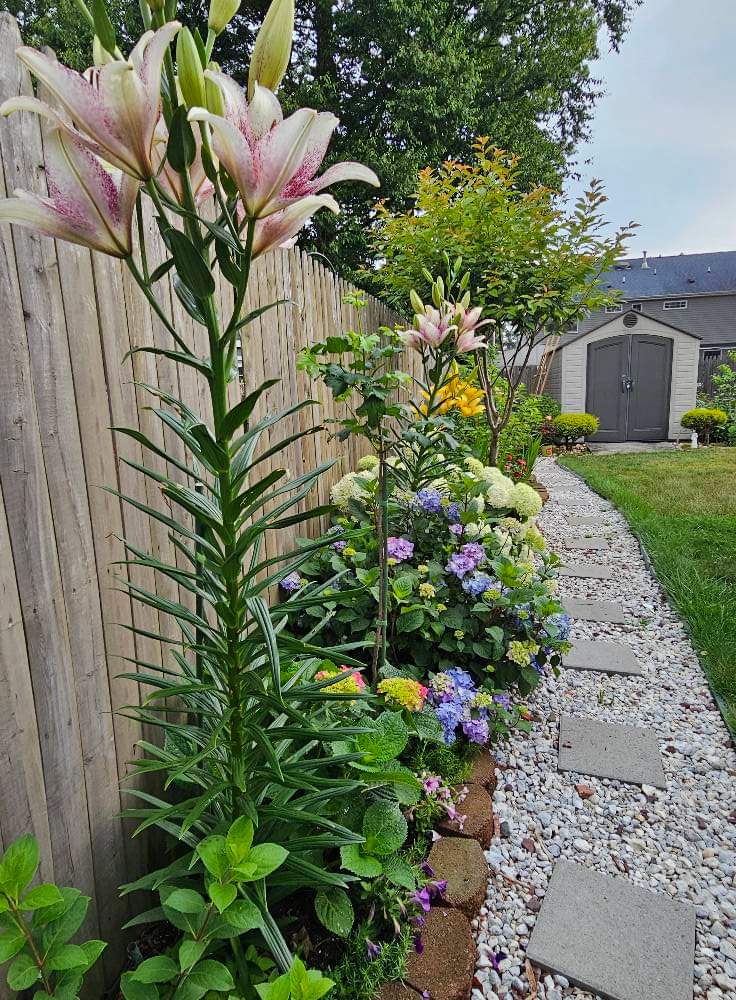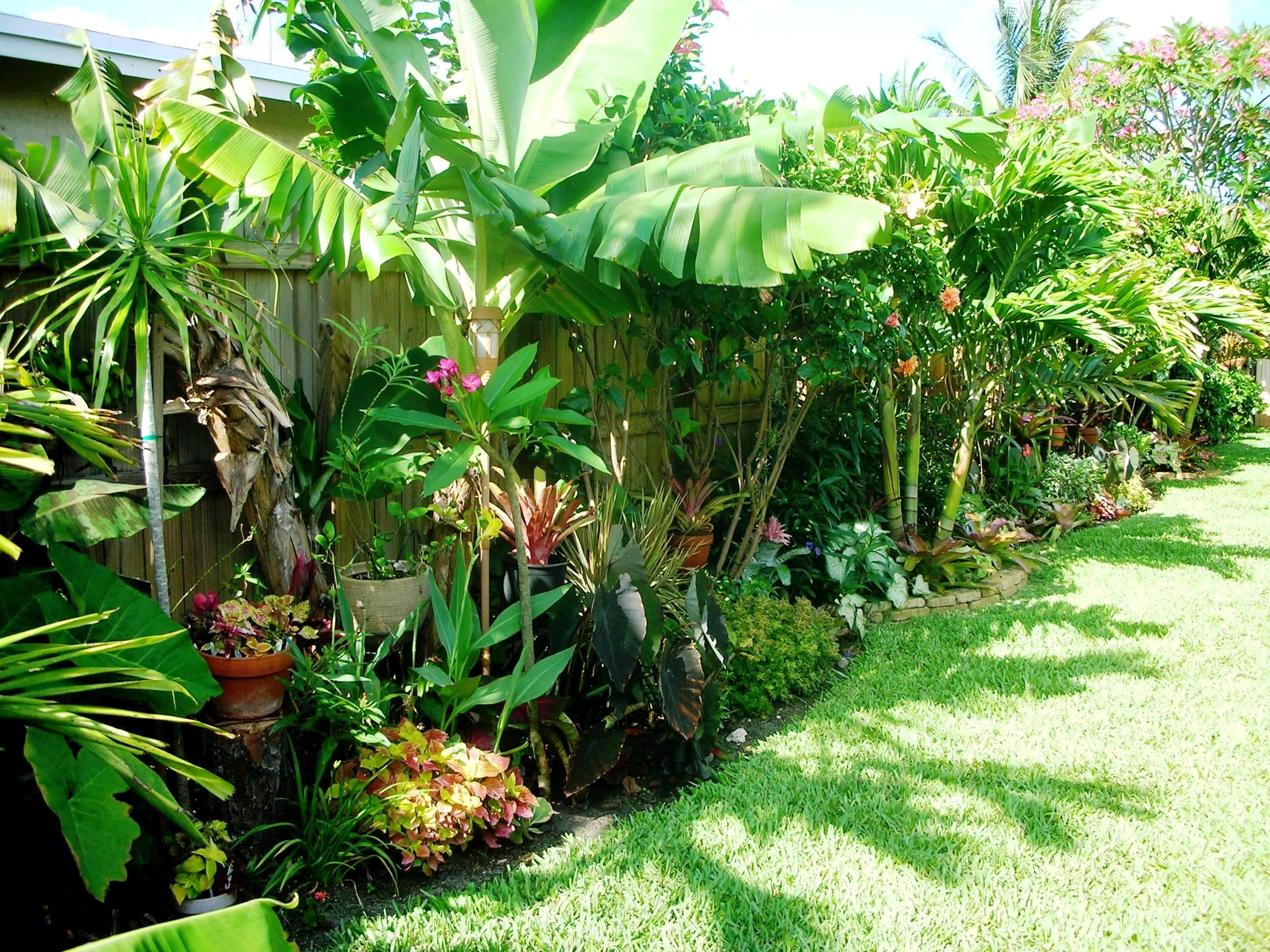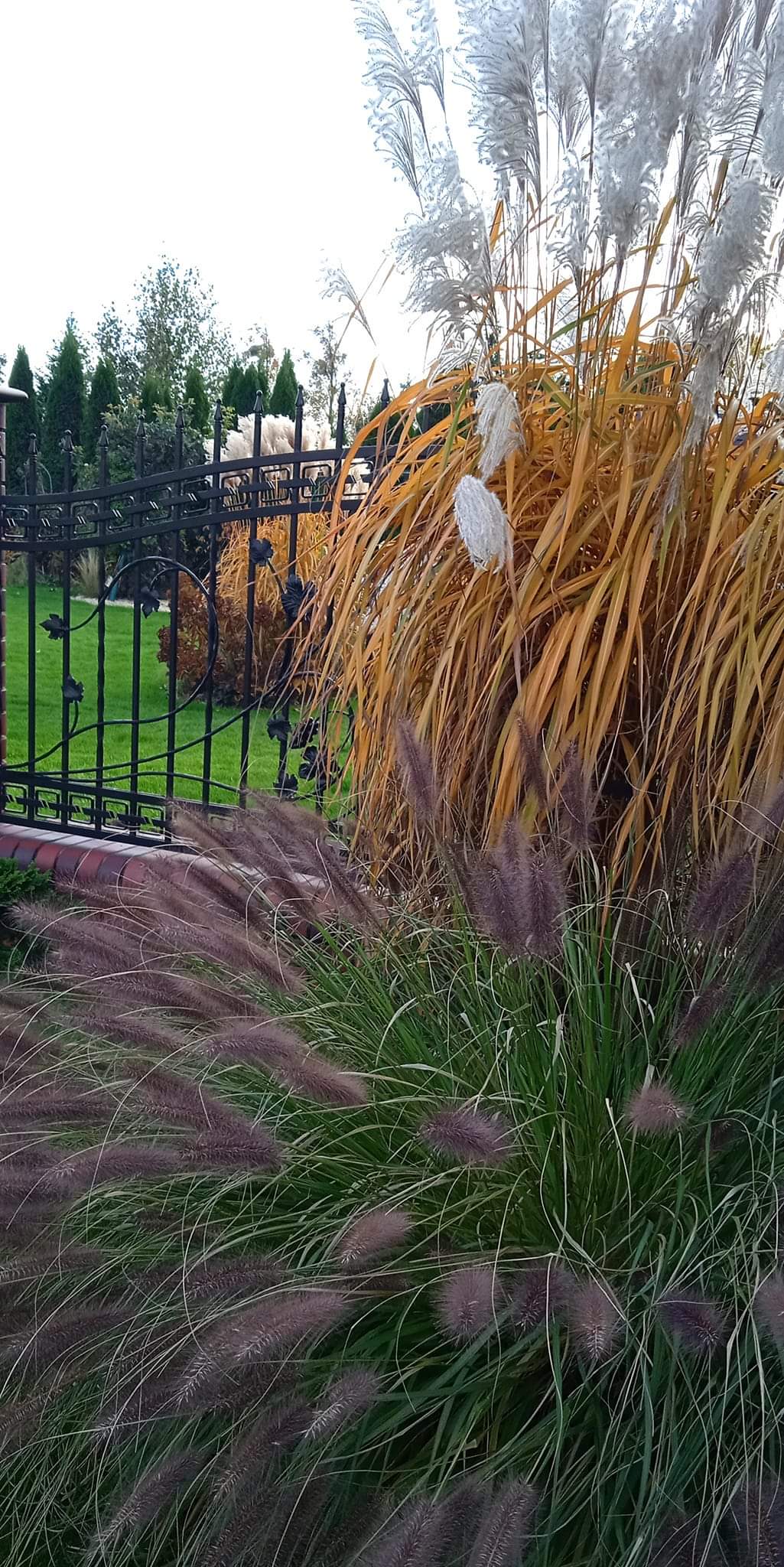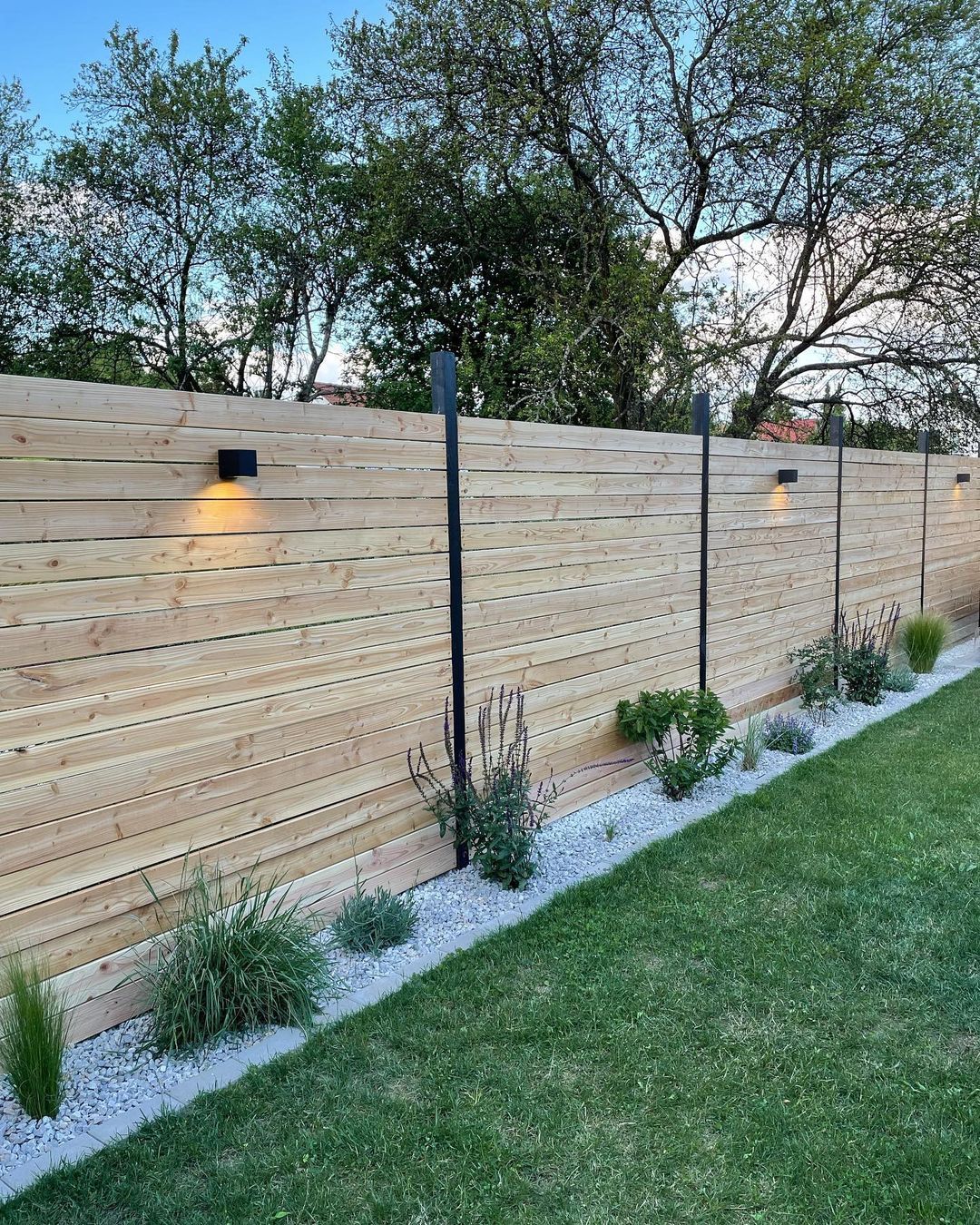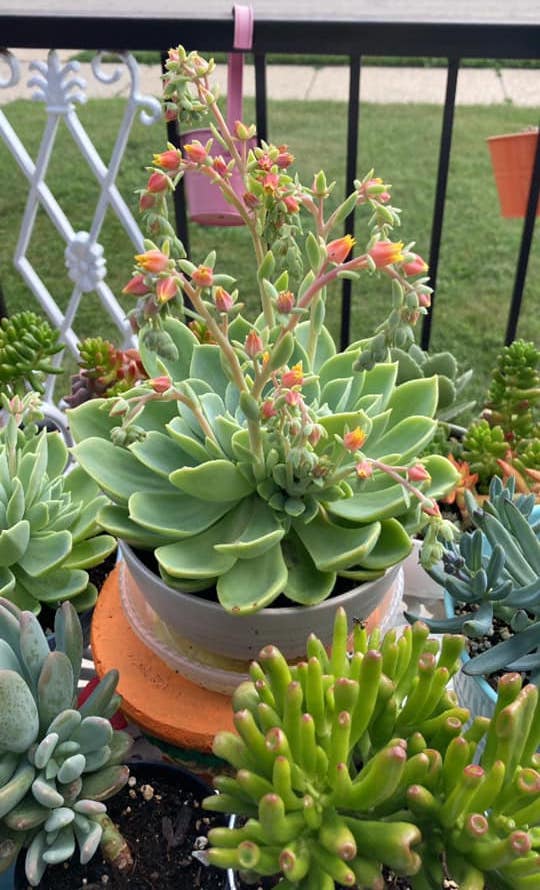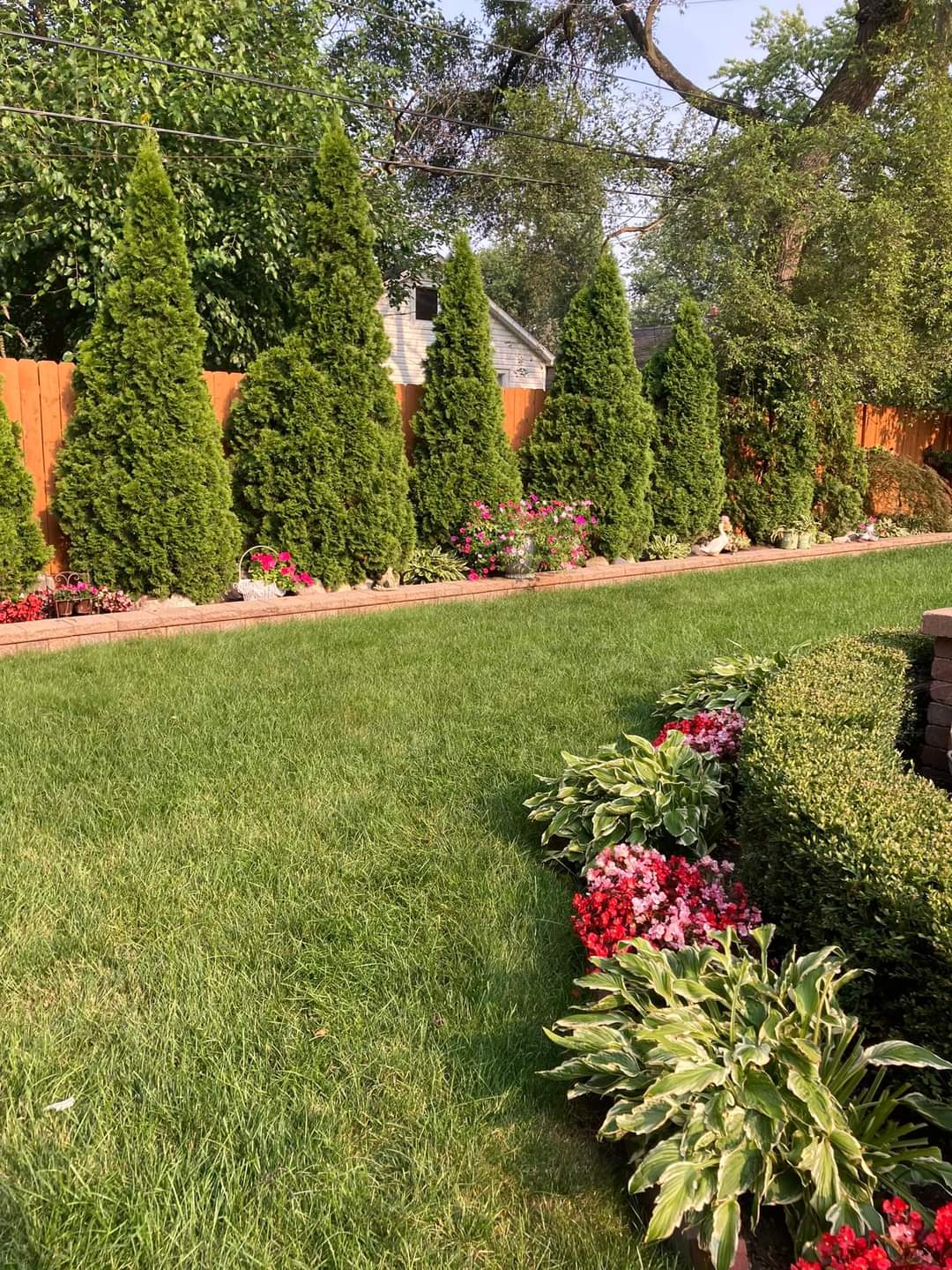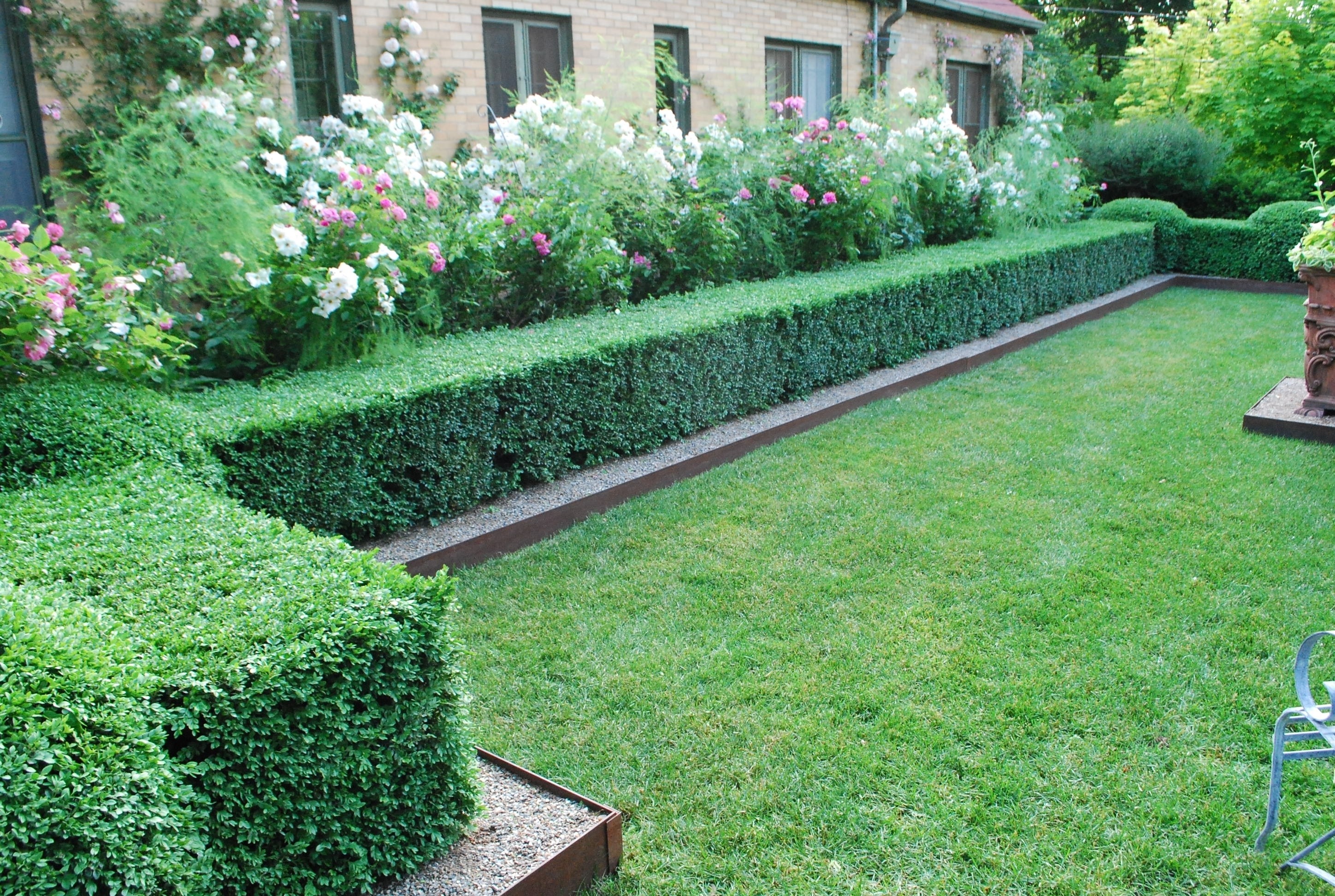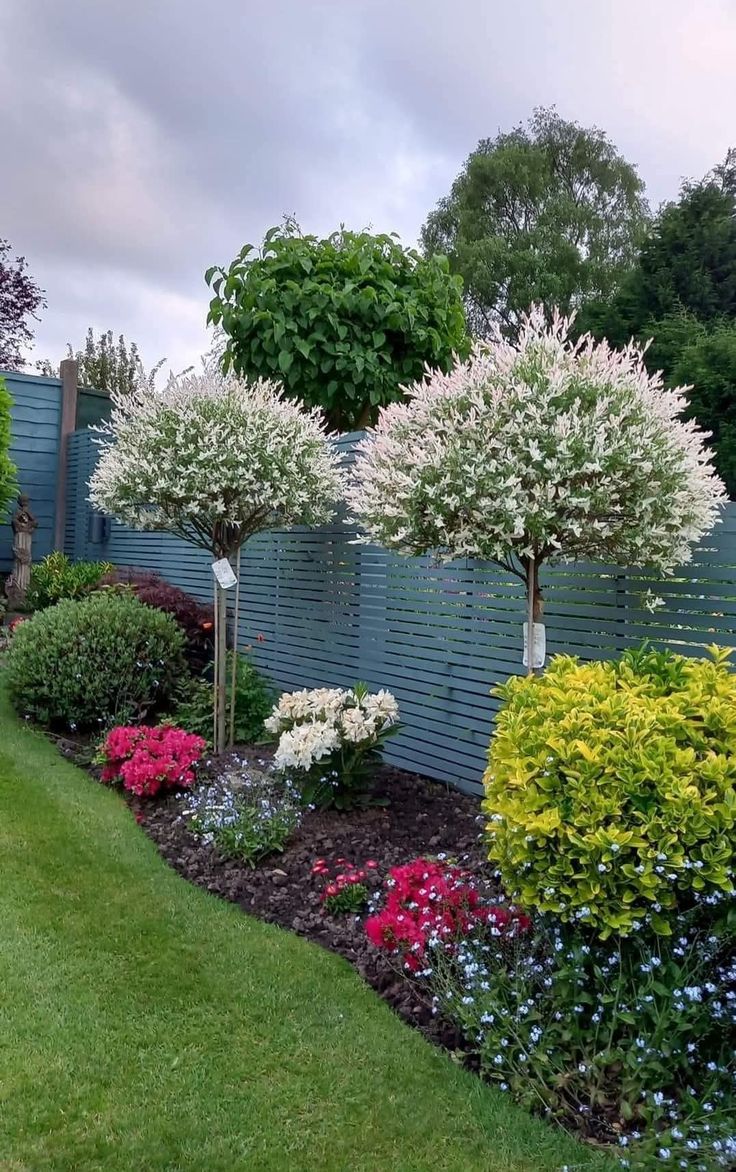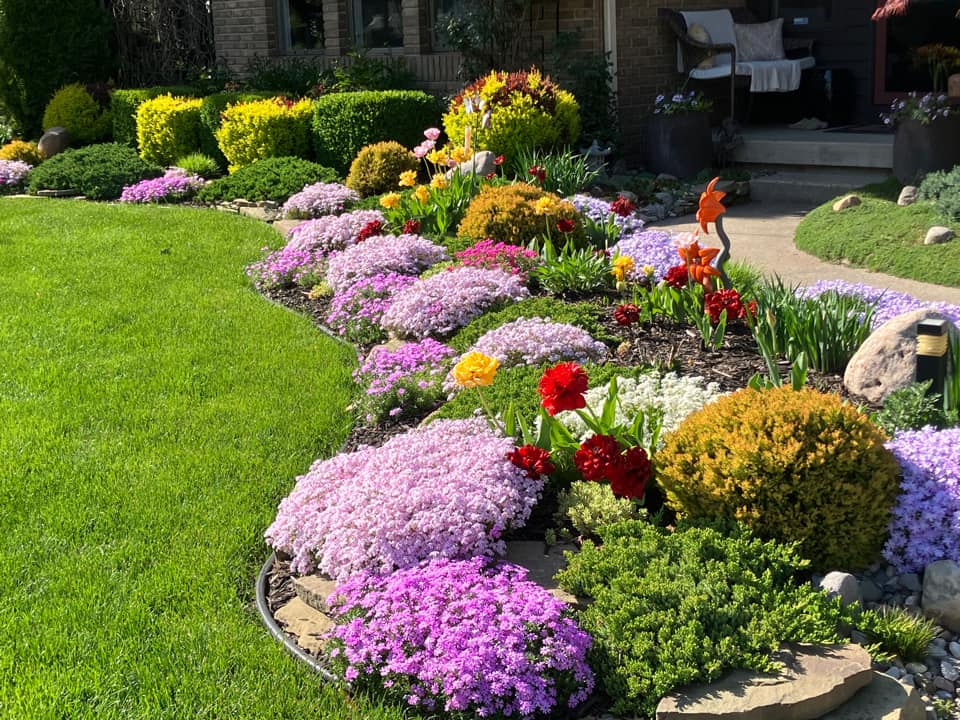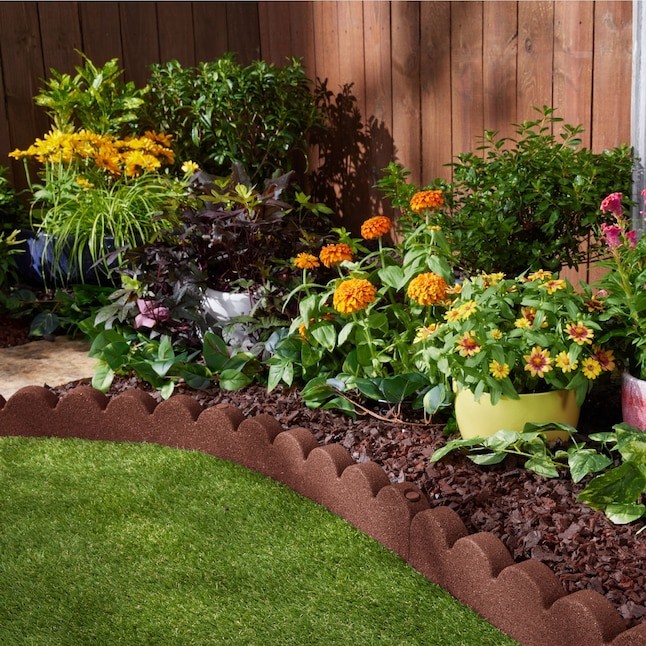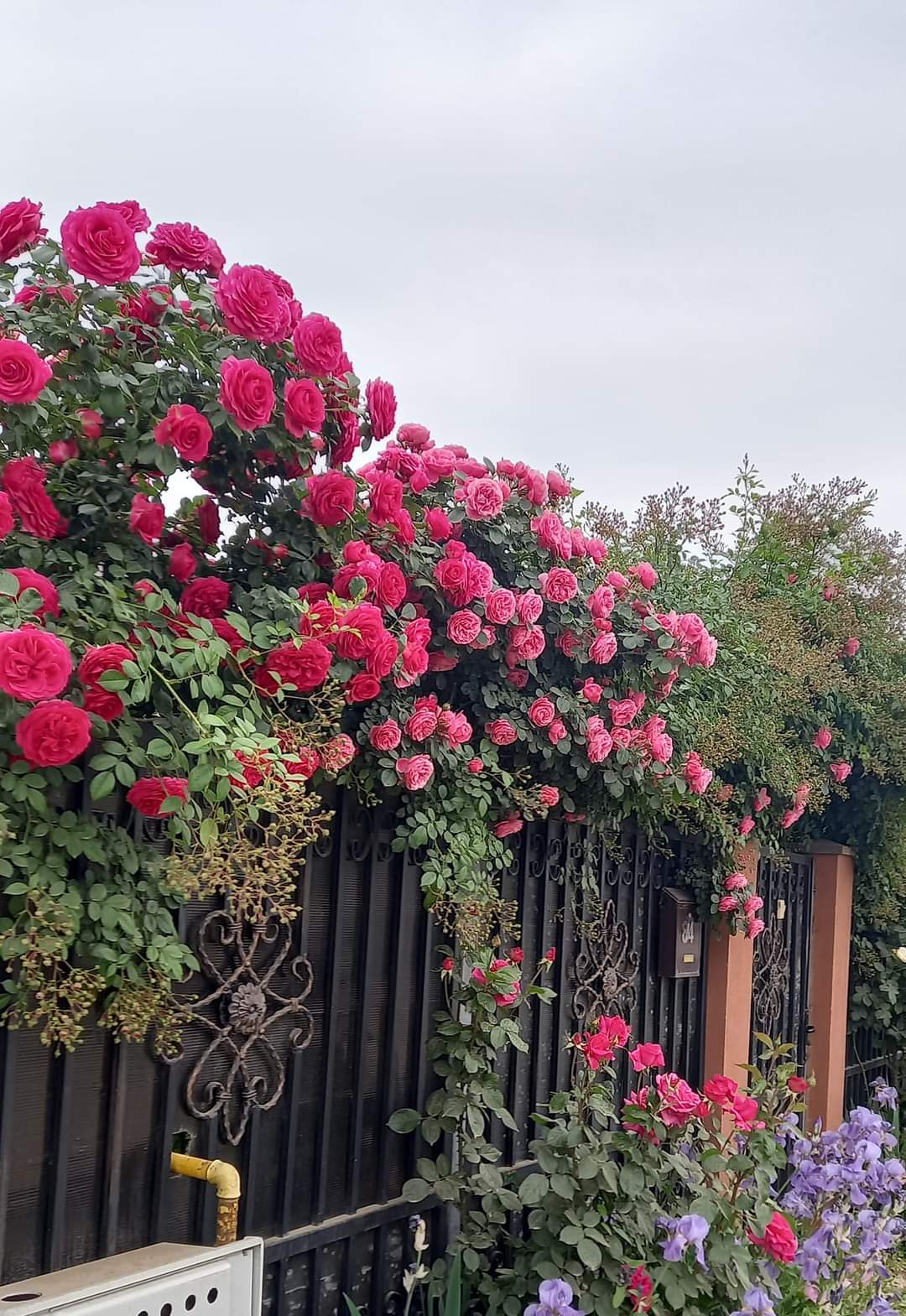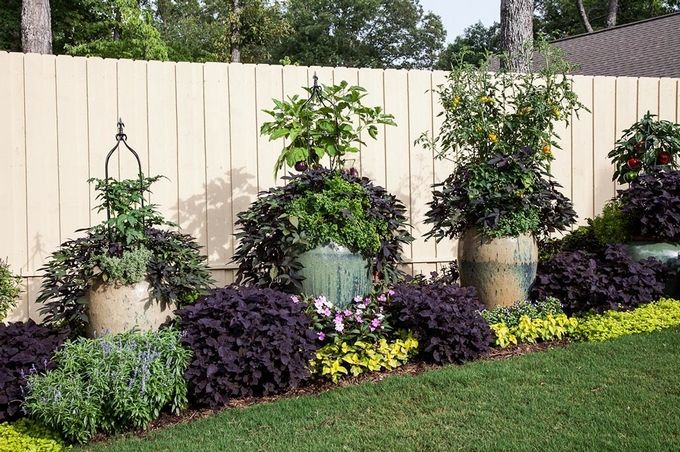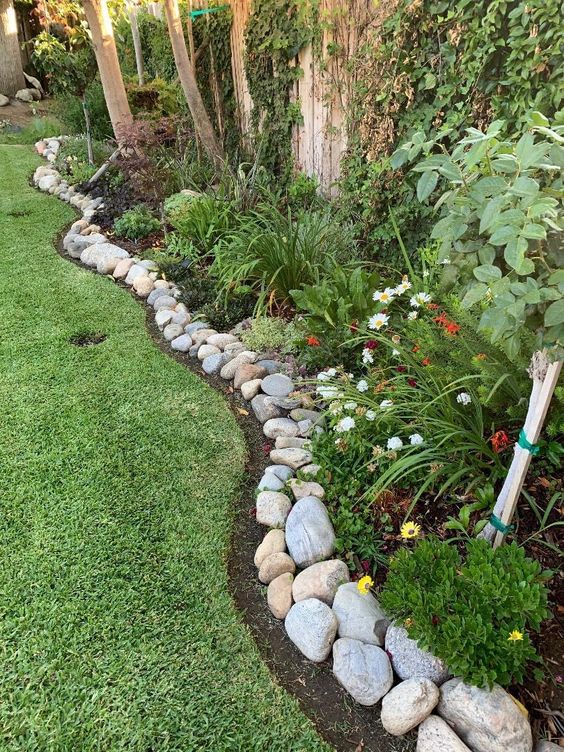Fences do a great job of providing privacy, structure, and security. However, beyond their practical purposes, your fence can elevate the aesthetics of your entire landscape, but how, you ask? Aside from picking a beautifully designed fence, well-thought-out edging can do wonders.
Edging your fence helps frame the fence line, softening it with color, interest, and texture, making the space visually captivating and harmonious with the rest of your outdoor space. In addition, it keeps the area neat.
There are numerous ways to edge your fence, from chic and minimalistic designs to bold, showy ones.
Brilliant Fence Edging Ideas to Upgrade Your Yard
Below are edging ideas to turn an ordinary fence into something extraordinary.
1. A Flower Bed Along The Fence
Line your fence with flowers to soften the area and add color, texture, and even some fragrance. While a traditional choice, a flower bed along your fence is timeless and versatile. Incorporate a diverse plant group (different heights, textures, and colors) for a stunning, captivating arrangement.
Layer the flowering plants by height. Moreover, color-coordinate the plants per your preference to create a balanced yet eye-catching look.
Related Post:
2. Edge Your Fence With Bamboo
Plant bamboo strategically along your fence to give the space a serene, natural look. Bamboo, especially the running varieties, grows fast and spreads quickly, so it’s essential to contain it. One option is to grow it in pots.
Bamboo plants vary in height, so consider your fence’s height during selection—for instance, edge shorter fences with dwarf bamboo and tall varieties on taller ones.
3. Create A Tropical Paradise Along Your Fence
Tropical plants, characterized by large, bold leaves, unique shapes, and vibrant colors, can turn your fence and outdoors into lush, beautiful spaces with an exotic vibe. They also provide privacy in your backyard and shade. Choose tropical plants suited to your climate.
You can plant one type of tropical plant along your fence, such as bird of paradise, bananas, and tall ferns, or mix plants of different heights and textures.
4. Add Movement With Ornamental Grasses
Plant ornamental grasses in clusters along your fence for year-round interest, movement, texture, color, and height. Alternatively, layer ornamental grasses based on height. These plants sway gracefully in the wind and rustle gently, producing soothing sounds.
Besides bringing life and movement to your fence line, ornamental grasses soften the fence’s hard lines. Also, tall ornamental grasses make great privacy screens.
5. Install Lights Along Your Fence
Illuminate your fence in the evenings, accentuate different features, and make your outdoors safer and visible at night by installing lights along your fence line. Many lighting options exist. These include decorative lanterns, stake lights, bollard Lights, and accent lights.
Decide the purpose you wish the lights to provide during selection. Also, coordinate the lighting with your fence style.
6. A Succulent Fence Edge
Choose succulents like sedum, aloe vera, echeverias, and agave if you want a fence edge suited for sunny conditions and thrive with minimal effort and care. Aside from elevating the visual appeal, these plants will also help stabilize the soil around your fence.
Customize your succulent fence edging according to your preference and the available space. For instance, opt for a linear or curved arrangement.
7. Tall Trees Along A Fence
Planting tall trees, particularly evergreens, creates a green curtain that makes your fence line appealing all year round, offers privacy and shade, acts as windbreaks, and softens the area. Also, you can muffle noise by planting these trees close together.
Read More: Tall Skinny Trees For Landscaping
Leave sufficient space between the fence and trees to accommodate their mature size. Excellent choices include Italian cypress, Arborvitae, Japanese maples, and birch.
8. A Boxwood Hedge
Give the edges of your fence line a tidy, structured look by planting boxwood. This evergreen with dense foliage will frame your fence beautifully and provide color and texture consistently, even in winter. You can plant boxwood in a straight line or an undulating line to break up the fence’s rigid lines.
Also, keep your boxwood at a uniform height or vary the heights by placing taller varieties at intervals.
9. Establish A Mulch Bed
Spread wood chips, shredded leaves, or compost evenly across the entire length of your fence to establish a narrow, minimalistic mulch bed. An organic mulch bed will give your fence line a clean, finished look. It will also prevent erosion and wood growth.
Plant small trees, shrubs, or flowering plants interspersed within the mulch bed to make this space more inviting and lively.
10. Plant Ground Covers
A fence edge made up of ground covers such as creeping thyme, dymondia, sedum, and ajuga provides a seamless transition from your fence to the surrounding areas. These plants are not only beautiful with colorful blooms or stunning foliage but also help suppress weeds and control erosion.
Plant a single ground cover species for a clean appearance. Alternatively, you can layer different ground cover species or combine them with other plants.
11. A Pebble Edge
Pebbles make charming, attractive edging materials. They feature diverse shapes, colors, and sizes. Natural earth tones like grays provide a subtle, organic look, while vibrant hues make a bold statement. You can create a monochrome, multi-colored, or zen-inspired pebble edge.
Define the boundary of your pebble fence edge with your preferred edging materials. Options include stone, metal, and plastic. A pebble edging needs little upkeep.
Pebbles alone make for a stunning, captivating fence edging. However, growing hardy trees sparsely across the space can elevate this idea further.
12. Plastic Edging
Use plastic if you want a pocket-friendly, durable, easy-to-fix fence edging solution. Plastic can take on harsh weather without rotting, warping, or cracking. You can use flexible, rigid, or interlocking plastic, depending on your preferences.
You can find plastic edging materials with vibrant colors, textures, and patterns that are sure to make the area around your fence visually stunning. Rinse this edging occasionally to retain its appearance.
13. Terracotta Tile Edging
Infuse an earthy, warm Mediterranean charm into your outdoors by edging your fence with terracotta. The material is eco-friendly, highly durable, and complements different features and styles. Below are different ways to use terracotta as fence edging:
- Arrange terracotta pots evenly along your fence.
- Line, stagger, or angle terracotta bricks or tiles along the fence.
- Create a mosaic edge with broken pieces of terracotta tiles or pots.
14. Trailing Plants
Plant trailing plants and vines like clematis and wisteria along the edges of your fence to instantly transform a bare wall into a mesmerizing space full of color, texture, and life. Train these plants to climb your fence, covering it with lovely foliage and flowers.
You can also install wire frames or trellises to support the plants. Choose trailing plants based on the local climate, desired aesthetics, available space, and growing conditions.
15. Establish An Edible Garden Along Your Fence
Make the space along your fence productive by growing herbs, fruits, and vegetables on it. This idea will allow you to enjoy fresh produce while also beautifying your outdoors. While you can grow these plants in-ground, you can manage their growth and care more easily if you use containers or planters.
Combine plants with different colors and textures and position the plants based on height
16. A Stone Border
Arrange stones across your fence’s length in your preferred layout- you could stack them, lay them linearly, create curves, or even bury them slightly. After that, fill the space behind the border with various flowering and foliage plants or just lay mulch.
You can plant perennials, annuals, bulbs, ground covers, or even shrubs. The stones will provide an appealing background for the plants, letting them stand out. A stone edge lasts long as it is not susceptible to fading, warping, or rotting. In addition, it requires little upkeep.
To Summarize,
There are a multitude of ways you can edge your fence, each offering unique features to help turn it into a captivating focal point and showcase your style and personality. A good fence edging can improve the appearance of your fence and make it functional. An edge will highlight your fence and make your entire landscape pop. You can execute the ideas we’ve discussed a

Hey there, I’m Derek Schew, a writer for Lawnholic.com, where we cover everything and anything related to lawns. As someone who’s spent countless hours tending to my own lawn, I’m passionate about sharing my knowledge and helping others achieve the perfect yard. From lawn care tips to product reviews, I’m committed to providing our readers with the most accurate and up-to-date information available. So whether you’re a seasoned lawn enthusiast or just getting started, I invite you to join our community and discover the joys of a lush, green lawn.


